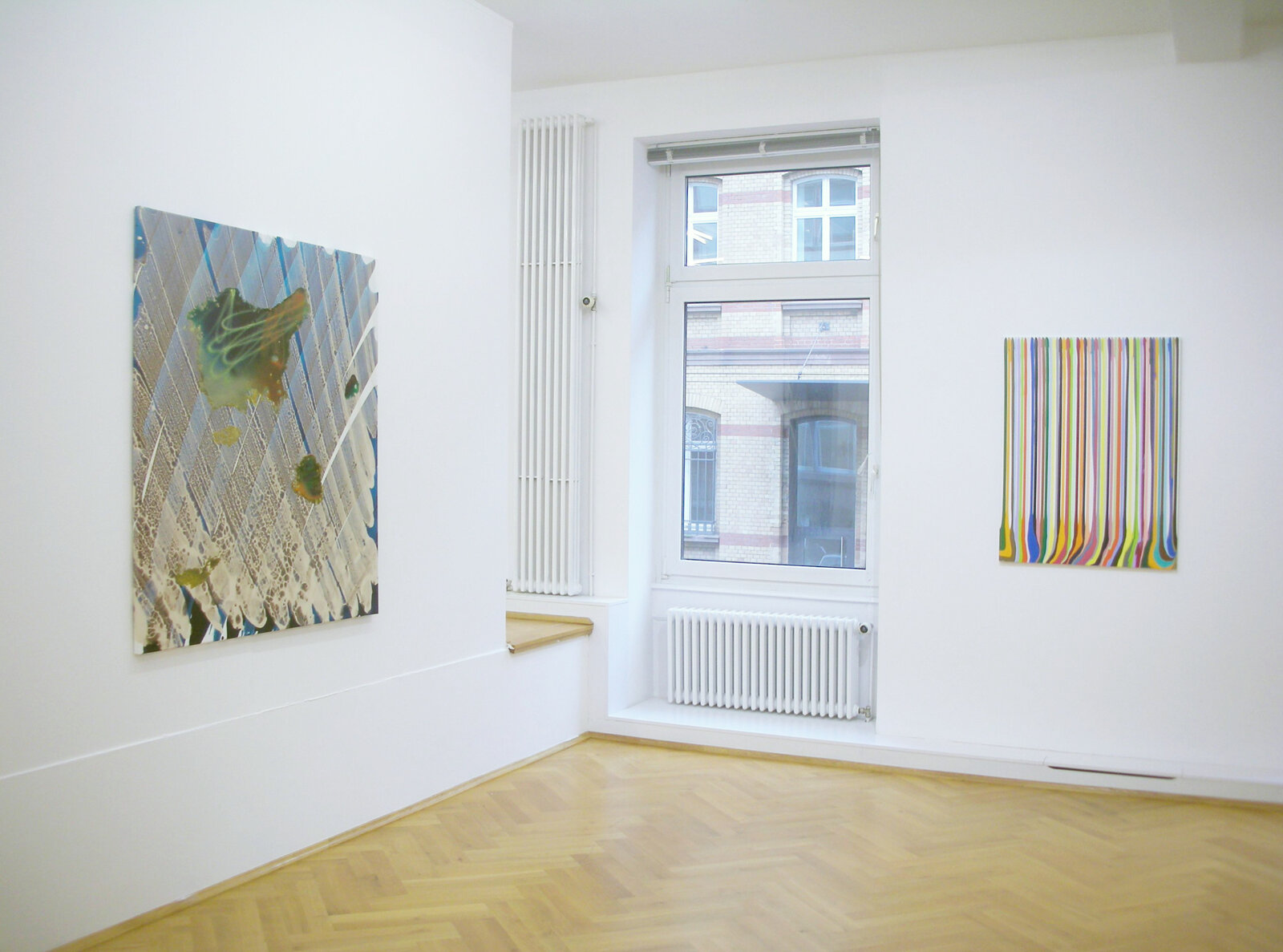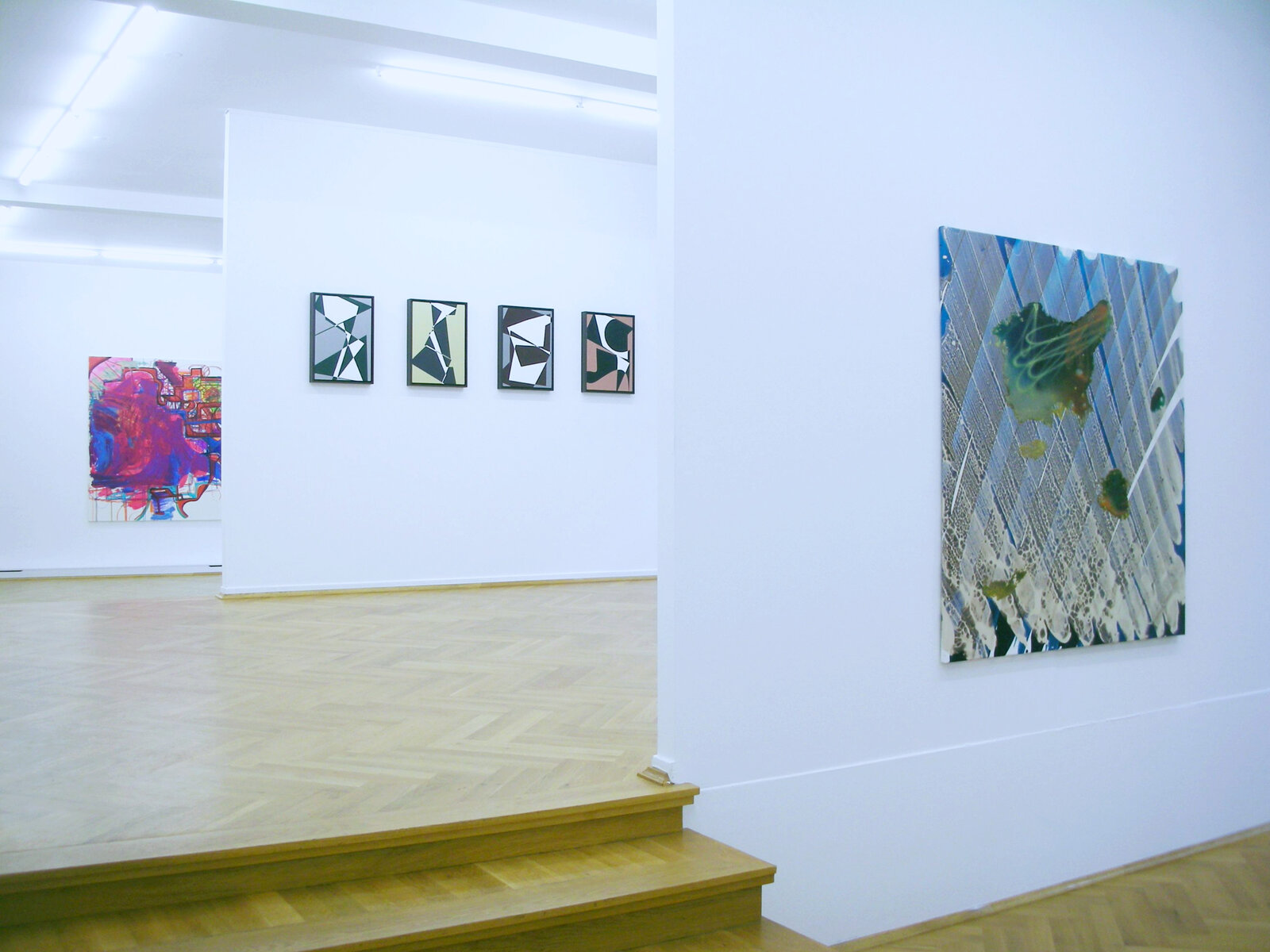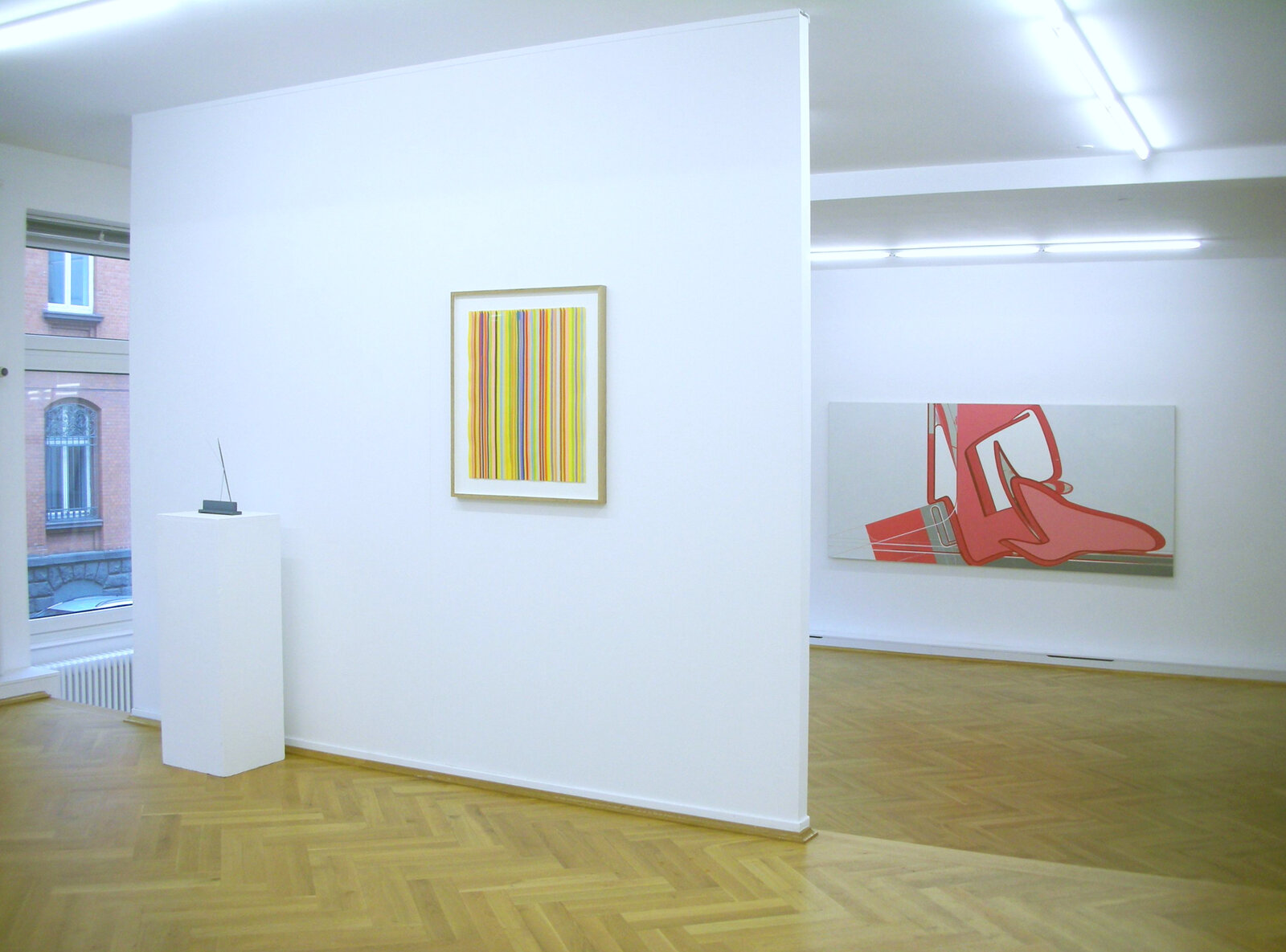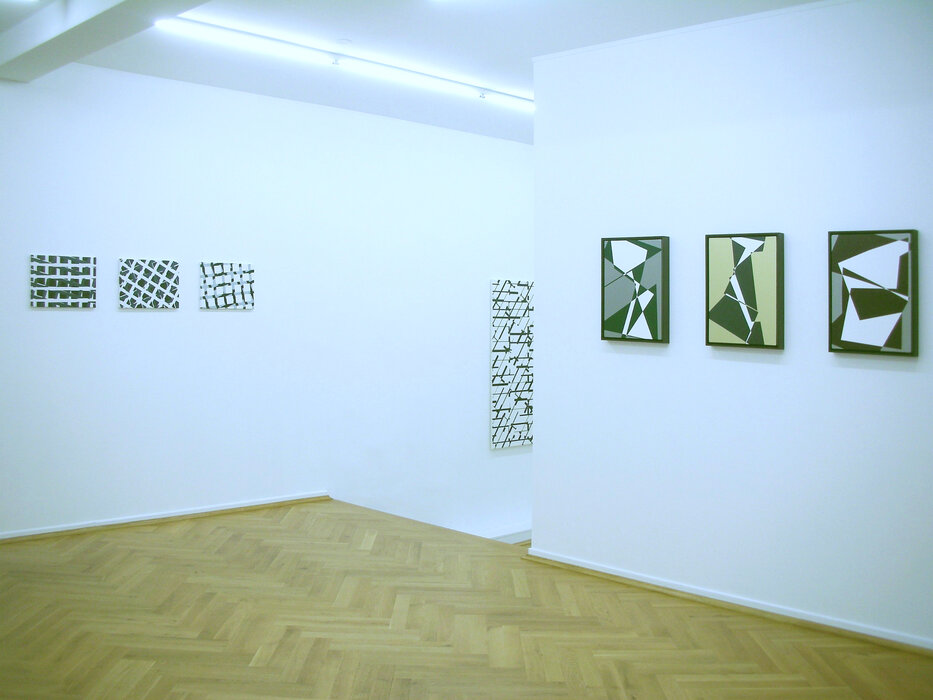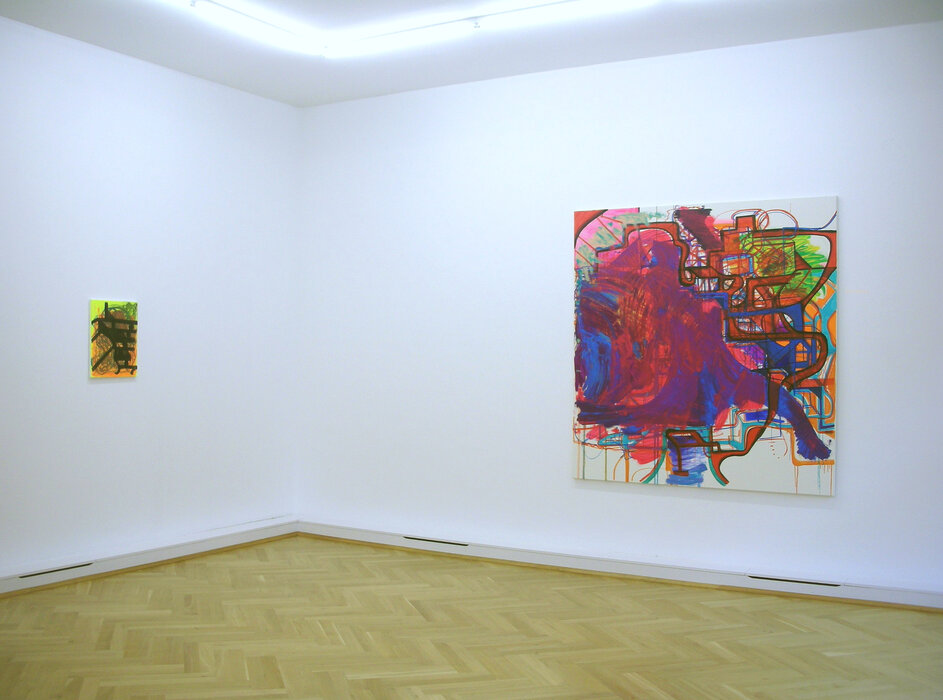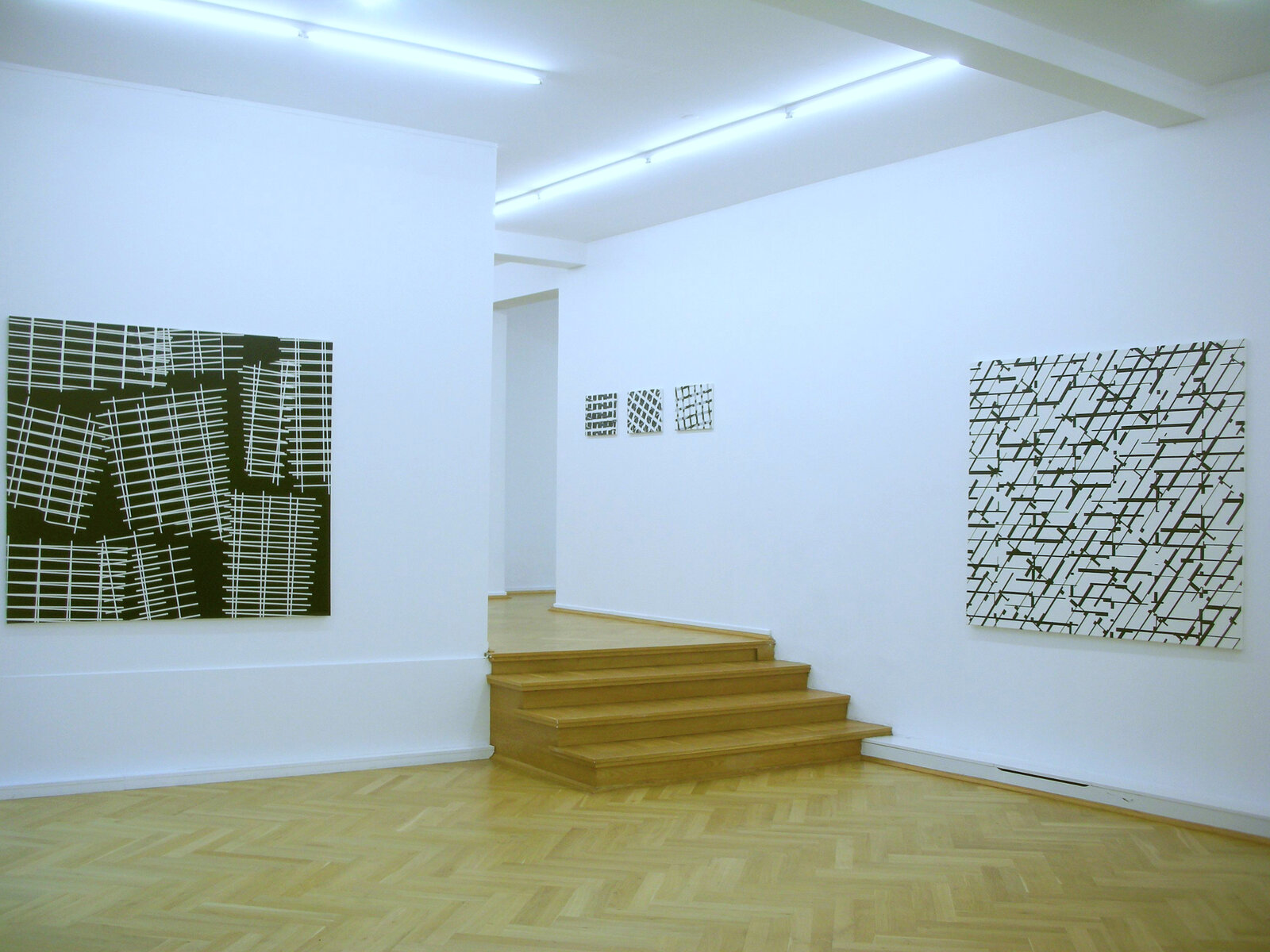Abstraction and Structure
06.05. - 31.07.2010
Abstraction is a phenomenon that is initially understood to mean a reduction in complex reality: simplification, systematization on the one hand, localization of the prototype among the variety of appearances on the other. Abstracting is an important process for generating, representing and conveying new knowledge. Abstraction arises, for example, through the macroscopic or microscopic gaze - two models of seeing that stand for the dissolution of the visible world, for example in patterns, in structures. Abstraction also accompanies the history of modern perception and modern technologies. New modes of perception, triggered by scientific findings and new media technologies, influence our relationship to reality even in everyday life.
When reflecting on perception, it becomes clear that we always try to trace back what we see to known forms and structures, to our "preconceived" visual experiences. "Abstract vision" has to be learned first. It is difficult for us to leave something as a structure or just as a form - unless we see a work of art independent of its descriptive function, independent of representation, unrestrictedly autonomous in its effect of color and form. The avoidance of clearly recognizable structure - for example in Informel, or echoes of the representational in the constructed works of formal abstract art based on form and line - testifies to the attempt to achieve objectification. However, it also applies: viewed as a concretion, every painting is an abstract structure and reality at the same time.
Abstraction is also a key phenomenon in today's art practice. While at the beginning of abstract painting the focus was still on changing perception, today it is a fundamental parameter with which or against which scientific and aesthetic argumentation is organized. After the return of the figurative in art from 1960 onwards, abstraction is primarily a method that helps to achieve expressiveness on the practical level and to reflexive discussion on the theoretical level (s). The renewed recourse to narrative strategies in figurative painting, however, is not a step backwards from abstraction. Rather, the relationship between abstraction and figuration is important for today's artistic practice, because a productive relationship of tension develops from this.
Ian Davenport was born in London in 1966. His paintings are created in a repetitive and formal process, comparable to a scientific experiment. He usually lets the paint applied with a syringe flow downwards over sloping surfaces from the upper edge. The result is intensely colored stripe images, enriched by a few outliers of the running paint, which happen to be caused by minimal irregularities in the surface of the subsurface.
Joanne Greenbaum, born in New York in 1953, creates picture structures on the one hand through strictly formal constructs and on the other hand through light-hearted painterly gestures that are entangled in a multi-layered complex pictorial space. As if lying on different levels, geometric and organic forms meet, come into conflict and yet appear to be systematically interwoven.
Katharina Grosse, born in Freiburg im Breisgau in 1961, works with a spray gun and brush. Her painting grounds are stretched canvases, aluminum panels and large-format paper webs, which determine the sensual effect of the color and its narrative content. In anarchic renunciation of ordered compositional structures, she creates an experimental, autonomous painting.
Frank Nitsche, born in Görlitz in 1964, plays on the border of abstract form with structures that cite memory. He uses pictures from journals and magazines as an archive, as a source of inspiration for his abstract works. Translated into his formal language, they can no longer be clearly deciphered. In this way the images remain highly suggestive and it is up to the viewer to interpret them.
Ian Davenport was born in London in 1966. His paintings are created in a repetitive and formal process, comparable to a scientific experiment. He usually lets the paint applied with a syringe flow downwards over sloping surfaces from the upper edge. The result is intensely colored stripe images, enriched by a few outliers of the running paint, which happen to be caused by minimal irregularities in the surface of the subsurface.
Joanne Greenbaum, born in New York in 1953, creates picture structures on the one hand through strictly formal constructs and on the other hand through light-hearted painterly gestures that are entangled in a multi-layered complex pictorial space. As if lying on different levels, geometric and organic forms meet, come into conflict and yet appear to be systematically interwoven.
Katharina Grosse, born in Freiburg im Breisgau in 1961, works with a spray gun and brush. Her painting grounds are stretched canvases, aluminum panels and large-format paper webs, which determine the sensual effect of the color and its narrative content. In anarchic renunciation of ordered compositional structures, she creates an experimental, autonomous painting.
Frank Nitsche, born in Görlitz in 1964, plays on the border of abstract form with structures that cite memory. He uses pictures from journals and magazines as an archive, as a source of inspiration for his abstract works. Translated into his formal language, they can no longer be clearly deciphered. The pictures remain highly suggestive and the pictures by Albrecht Schnider, born in Lucerne in 1958, appear like random sections of unfolded surfaces that could expand kaleidoscopically beyond the edge of the picture. The precisely painted inner edges and the use of the metal colors gold, silver and bronze give the impression of standing in front of industrially manufactured patterns. Everything personal, handwritten and referring is banned from the pictures.
The paintings by Esther Stocker, born 1974 in Schlanders, South Tyrol, are mostly grid-like geometric patterns in black and white or shades of gray. Minimal interventions that push themselves into the field of vision like image disturbances on a screen that is building up too slowly, unsettle the clarity of the geometric shapes used. In this way Esther Stocker succeeds in breaking open conceptions of order, space and painting with the simplest of means. Is left to the viewer to interpret them.
When reflecting on perception, it becomes clear that we always try to trace back what we see to known forms and structures, to our "preconceived" visual experiences. "Abstract vision" has to be learned first. It is difficult for us to leave something as a structure or just as a form - unless we see a work of art independent of its descriptive function, independent of representation, unrestrictedly autonomous in its effect of color and form. The avoidance of clearly recognizable structure - for example in Informel, or echoes of the representational in the constructed works of formal abstract art based on form and line - testifies to the attempt to achieve objectification. However, it also applies: viewed as a concretion, every painting is an abstract structure and reality at the same time.
Abstraction is also a key phenomenon in today's art practice. While at the beginning of abstract painting the focus was still on changing perception, today it is a fundamental parameter with which or against which scientific and aesthetic argumentation is organized. After the return of the figurative in art from 1960 onwards, abstraction is primarily a method that helps to achieve expressiveness on the practical level and to reflexive discussion on the theoretical level (s). The renewed recourse to narrative strategies in figurative painting, however, is not a step backwards from abstraction. Rather, the relationship between abstraction and figuration is important for today's artistic practice, because a productive relationship of tension develops from this.
Ian Davenport was born in London in 1966. His paintings are created in a repetitive and formal process, comparable to a scientific experiment. He usually lets the paint applied with a syringe flow downwards over sloping surfaces from the upper edge. The result is intensely colored stripe images, enriched by a few outliers of the running paint, which happen to be caused by minimal irregularities in the surface of the subsurface.
Joanne Greenbaum, born in New York in 1953, creates picture structures on the one hand through strictly formal constructs and on the other hand through light-hearted painterly gestures that are entangled in a multi-layered complex pictorial space. As if lying on different levels, geometric and organic forms meet, come into conflict and yet appear to be systematically interwoven.
Katharina Grosse, born in Freiburg im Breisgau in 1961, works with a spray gun and brush. Her painting grounds are stretched canvases, aluminum panels and large-format paper webs, which determine the sensual effect of the color and its narrative content. In anarchic renunciation of ordered compositional structures, she creates an experimental, autonomous painting.
Frank Nitsche, born in Görlitz in 1964, plays on the border of abstract form with structures that cite memory. He uses pictures from journals and magazines as an archive, as a source of inspiration for his abstract works. Translated into his formal language, they can no longer be clearly deciphered. In this way the images remain highly suggestive and it is up to the viewer to interpret them.
Ian Davenport was born in London in 1966. His paintings are created in a repetitive and formal process, comparable to a scientific experiment. He usually lets the paint applied with a syringe flow downwards over sloping surfaces from the upper edge. The result is intensely colored stripe images, enriched by a few outliers of the running paint, which happen to be caused by minimal irregularities in the surface of the subsurface.
Joanne Greenbaum, born in New York in 1953, creates picture structures on the one hand through strictly formal constructs and on the other hand through light-hearted painterly gestures that are entangled in a multi-layered complex pictorial space. As if lying on different levels, geometric and organic forms meet, come into conflict and yet appear to be systematically interwoven.
Katharina Grosse, born in Freiburg im Breisgau in 1961, works with a spray gun and brush. Her painting grounds are stretched canvases, aluminum panels and large-format paper webs, which determine the sensual effect of the color and its narrative content. In anarchic renunciation of ordered compositional structures, she creates an experimental, autonomous painting.
Frank Nitsche, born in Görlitz in 1964, plays on the border of abstract form with structures that cite memory. He uses pictures from journals and magazines as an archive, as a source of inspiration for his abstract works. Translated into his formal language, they can no longer be clearly deciphered. The pictures remain highly suggestive and the pictures by Albrecht Schnider, born in Lucerne in 1958, appear like random sections of unfolded surfaces that could expand kaleidoscopically beyond the edge of the picture. The precisely painted inner edges and the use of the metal colors gold, silver and bronze give the impression of standing in front of industrially manufactured patterns. Everything personal, handwritten and referring is banned from the pictures.
The paintings by Esther Stocker, born 1974 in Schlanders, South Tyrol, are mostly grid-like geometric patterns in black and white or shades of gray. Minimal interventions that push themselves into the field of vision like image disturbances on a screen that is building up too slowly, unsettle the clarity of the geometric shapes used. In this way Esther Stocker succeeds in breaking open conceptions of order, space and painting with the simplest of means. Is left to the viewer to interpret them.


